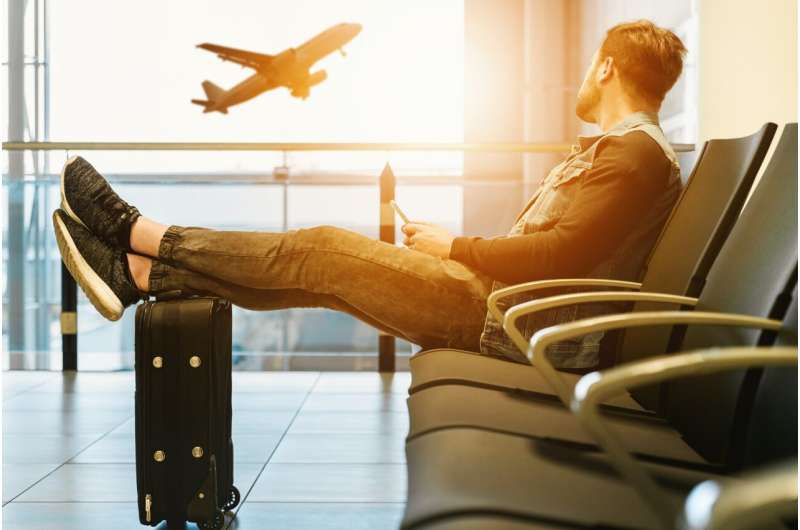
Why has commercial airline travel become so safe in the United States?
The tragic crash of Yeti Airlines flight 691 in Nepal serves as a reminder of how commercial flying used to be in the U.S., where airplane crashes were viewed as an unavoidable risk.
But the culture of American air travel has changed. Over the past 13 years, U.S. airlines have not endured a fatal crash.
“We just take it for granted that planes are safe,” says Ravi Sarathy, a professor of international business and strategy who studies the airline industry. “The numbers show that it’s much more dangerous to drive to work than it is to take a plane in terms of the probability of fatalities.”
As recently as 1996, the U.S. airline industry suffered a fatal crash for every 2 million departures, resulting in more than 350 deaths that year, according to The Wall Street Journal. By 2021, the rate had plummeted to one death for every 120 million departures.
A variety of safety measures across the board have contributed to airline safety. At the heart of the movement has been a cultural change within the cockpit of commercial jets that has veered the U.S. industry away from a military hierarchy and toward a model of teamwork among the airline crew, says Bruce Mamont, a flight instructor and former Boeing employee who lectures at Northeastern University Seattle.
“It goes under an umbrella concept called ‘aeronautical decision making,'” Mamont says. “It involves everybody who has a responsibility for the safe outcome of the flight—and has the shared destiny of being on the airplane—interacting with each other as a team to ensure that safe outcome.”
Airlines traditionally hired pilots from the military, which contributed to a culture of authority revolving around the airplane captain, Mamont says.
“It was kind of like the way we think about ships—that the captain has the final word,” Mamont says. “We still have that idea in aviation. We call it the ‘pilot in command,’ meaning that the pilot is ultimately responsible for the safe outcome of the flight.”
The authority of the pilot was so commanding that first officers and crew members were wary or intimidated of sharing information about potential problems, Mamont says.
“The problem is, if you’re performing an activity that requires a team effort and collaboration, sometimes observations—let alone opinions—that might be perceived as a challenge to the captain’s authority are withheld,” Mamont says. “They were so disregarded as members of the airplane’s crew that they didn’t feel like they would be listened to. And so they might not say, ‘Hey, there’s a lot of ice on the wings, maybe we should do something about that.'”
An example of the old hierarchy emerged in 2003 when three US Airways flight attendants were sued for defamation by their pilot after they informed the Federal Aviation Administration of an incident in which their observations about ice accumulating on the wings prior to takeoff were ignored by the cockpit. It took three attempts by the flight attendants to convince the pilot to submit the plane to de-icing.
In 2009, pilots Chesley (Sully) Sullenberger and Jeffrey Skiles succeeded in landing US Airways Flight 1549 on the Hudson River after the engines were shut down by a collision with a flock of birds. They were able to save all 155 people on board by working as a team, Mamont notes.
“Sully was a military guy, but he relied on all sorts of sources of information within the plane to help him,” Mamont says. “He and the first officer had been training and flying together. They had teamwork working for them. It took both of them flying that airplane to get the safe outcome.”
Technological advances have also contributed to U.S. airline safety, Sarathy says, noting that the ill-fated Yeti airplane lacked access to an airport instrument landing system, and, as a 15-year-old aircraft, had old transponders that may have functioned inaccurately.
“In general, automation has contributed enormously to improve airline safety,” Sarathy says. But he also notes that two crashes involving the Boeing 737 Max airplanes were caused by its automated flight control system. Those tragic events, which were responsible for 346 deaths, happened in Indonesia in 2018 and in Ethiopia in 2019.
“It’s a combination of engineering advances and advances in sensors and software that have improved aircraft safety,” Sarathy says. “The software tells the plane what to do based on the information that’s coming from the sensor. In a sense, you are automating the plane.”
Mamont says the high level of automation on commercial airliners, combined with the redundancy of having a second pilot in the cockpit, has greatly influenced the safety record for commercial airliners and smaller corporate jets. The absence of those features explains why far more crashes happen in the U.S. among smaller planes, he says.
“It has to do with how many people are flying the airplane,” Mamont says. “When you’re flying a commercial airliner, there are two pilots sharing the tasks. In a smaller, general aviation airplane, it’s a single-pilot operation. There is no pilot monitoring. You’ve got to do it all, and you don’t have the infrastructure of the airline doing a lot of the things they do to help prepare pilots for the flight. You don’t have as much automation in the airplane.”
Citation:
Why has US commercial airline travel become so safe? Teamwork has a lot do with it (2023, January 23)
retrieved 23 January 2023
from https://techxplore.com/news/2023-01-commercial-airline-safe-teamwork-lot.html
This document is subject to copyright. Apart from any fair dealing for the purpose of private study or research, no
part may be reproduced without the written permission. The content is provided for information purposes only.
For all the latest Technology News Click Here
For the latest news and updates, follow us on Google News.

